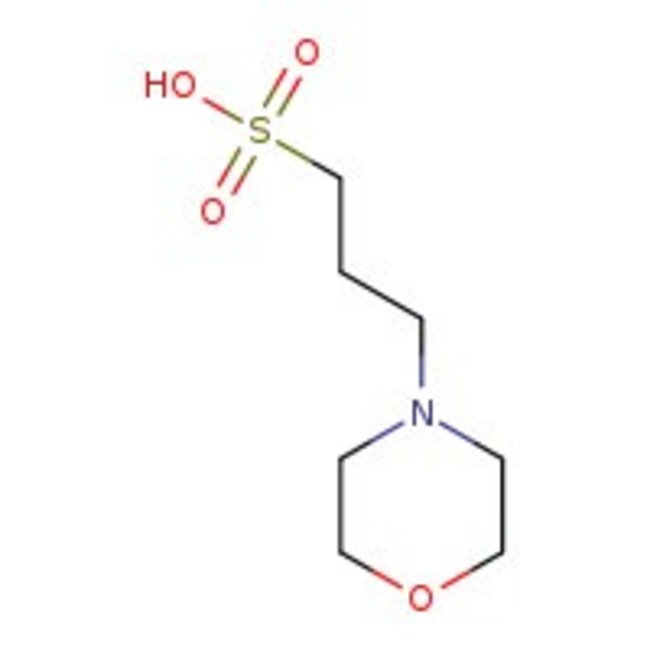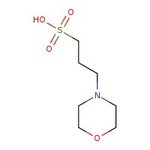Search Thermo Fisher Scientific
Thermo Scientific Chemicals
MOPS, 99%
CAS: 1132-61-2 | C7H15NO4S | 209.26 g/mol
Catalog number ALFA12914.36
View Price:Sign InSign in to see your account pricing. Need an account? Register with us today.
Quantity:
500 g
Specifications
Chemical Name or MaterialMOPS
CAS1132-61-2
Melting Point277°C to 280°C (decomposition)
Health Hazard 1H315-H319-H335
Health Hazard 2GHS H Statement
H315-H319-H335
Causes skin irritation.
Causes serious eye irritation.
May cause respiratory irritation.
H315-H319-H335
Causes skin irritation.
Causes serious eye irritation.
May cause respiratory irritation.
View more
MOPS is mainly used in biological experiments as a buffer solution. It is also used in protein purification. Further, it is utilized for polyacrylamide gel electrophoresis.
This Thermo Scientific Chemicals brand product was originally part of the Alfa Aesar product portfolio. Some documentation and label information may refer to the legacy brand. The original Alfa Aesar product / item code or SKU reference has not changed as a part of the brand transition to Thermo Scientific Chemicals.
Applications
MOPS is mainly used in biological experiments as a buffer solution. It is also used in protein purification. Further, it is utilized for polyacrylamide gel electrophoresis.
Solubility
Soluble in water.
Notes
Incompatible with strong oxidizing agents and strong bases.
MOPS is mainly used in biological experiments as a buffer solution. It is also used in protein purification. Further, it is utilized for polyacrylamide gel electrophoresis.
Solubility
Soluble in water.
Notes
Incompatible with strong oxidizing agents and strong bases.
RUO – Research Use Only
General References:
- Biological buffer, pKa = 7.2 at 20°C: Biochemistry, 5, 467 (1966). Utilized to promote a mimetic of the transketolase reaction: Eur. J. Org. Chem., 1121 (2006).
- Roy, L. N.; Roy, R. N.; Allen, K. A.; Mehrhoff, C. J.; Henson, I. B.; Stegner, J. M. Buffer standards for the physiological pH of the zwitterionic compound of 3-(N-morpholino) propanesulfonic acid (MOPS) from T=(278.15 to 328.15) K. J. Chem. Thermodyn. 2012, 47, 21-27.
- EL-Gahami, M. A.; Al-Bogami, A. S.; Albishri, H. M. Medium effect on the dimethyltin(IV) complexes of 2-(N-morpholino) ethanesulfonic and 3-(N-morpholino) propanesulfonic acid. J. Mol. Liq. 2014, 193, 45-50.



